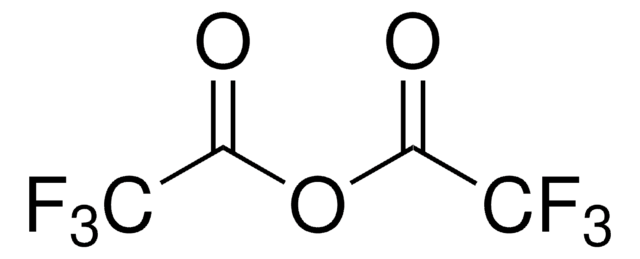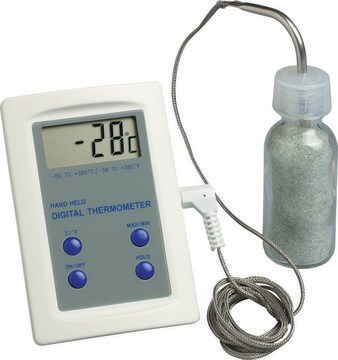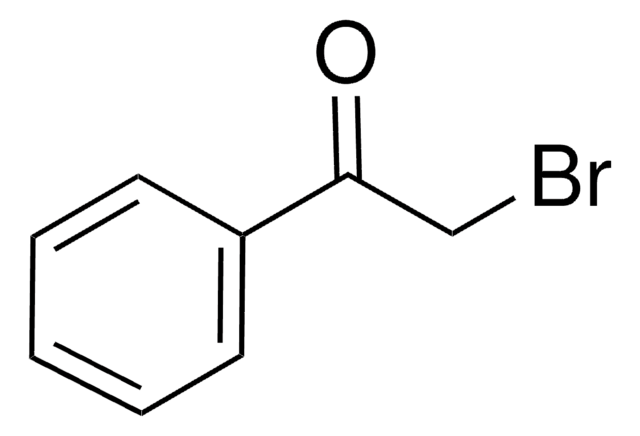91204
Acetic anhydride
for GC derivatization, LiChropur™, ≥99.0%
About This Item
Productos recomendados
grado
derivatization grade ((GC derivatization))
for GC derivatization
Nivel de calidad
densidad de vapor
3.5 (vs air)
presión de vapor
10 mmHg ( 36 °C)
4 mmHg ( 20 °C)
Ensayo
≥99.0% (GC)
≥99.0%
Formulario
liquid
temp. de autoignición
629 °F
calidad
LiChropur™
lim. expl.
10.3 %
idoneidad de la reacción
reagent type: derivatization reagent
reaction type: Acylations
técnicas
gas chromatography (GC): suitable
residuo de evap.
≤0.003%
índice de refracción
n20/D 1.390 (lit.)
bp
138-140 °C (lit.)
mp
−73 °C (lit.)
solubilidad
H2O: slightly soluble
densidad
1.08 g/mL (lit.)
cadena SMILES
CC(=O)OC(C)=O
InChI
1S/C4H6O3/c1-3(5)7-4(2)6/h1-2H3
Clave InChI
WFDIJRYMOXRFFG-UHFFFAOYSA-N
¿Está buscando productos similares? Visita Guía de comparación de productos
Descripción general
- It increases the stability of compounds by protecting unstable groups.
- It may render volatility on substances like carbohydrates or amino acids, that have several polar groups that they are non-volatile and generally decompose on heating.
- It allows the separations not possible with underivatized compounds.
- Compounds are detectable at very low levels with an ECD.
Acetic anhydride is a reagent utilized to form fragmentation-directing derivatives for GC/MS analysis.
Aplicación
Otras notas
Información legal
Palabra de señalización
Danger
Frases de peligro
Clasificaciones de peligro
Acute Tox. 2 Inhalation - Acute Tox. 4 Oral - Eye Dam. 1 - Flam. Liq. 3 - Skin Corr. 1B
Código de clase de almacenamiento
3 - Flammable liquids
Clase de riesgo para el agua (WGK)
WGK 1
Punto de inflamabilidad (°F)
120.2 °F - closed cup
Punto de inflamabilidad (°C)
49 °C - closed cup
Equipo de protección personal
Faceshields, Gloves, Goggles, type ABEK (EN14387) respirator filter
Elija entre una de las versiones más recientes:
¿Ya tiene este producto?
Encuentre la documentación para los productos que ha comprado recientemente en la Biblioteca de documentos.
Los clientes también vieron
Nuestro equipo de científicos tiene experiencia en todas las áreas de investigación: Ciencias de la vida, Ciencia de los materiales, Síntesis química, Cromatografía, Analítica y muchas otras.
Póngase en contacto con el Servicio técnico









